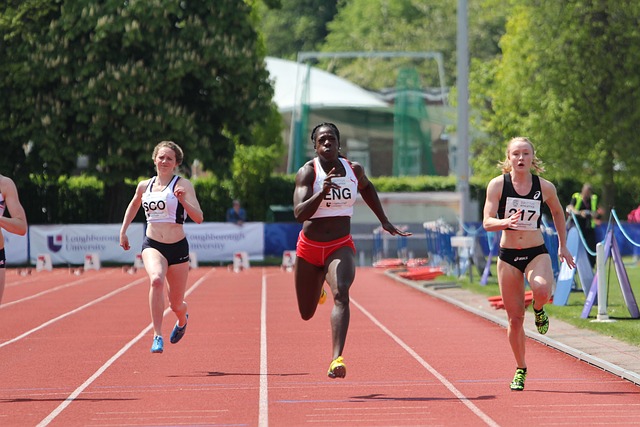Sprinting is crucial to living an optimally fit life, as Primal aficionados are aware. It is, after all, one of the Ten Primal Blueprint Laws and possibly the most basic anti-aging practice. In my opinion, short, intense, full-out sprints are the most effective way to burn extra body fat, make progress in your fitness, release anti-aging hormones into your system, and improve brain neurone performance. You can feel the impact of even a very short sprint workout on your hormone and metabolic performance for hours or days afterwards.
Running is an effective hormetic stressor, a quick, natural fight-or-flight response that strengthens your resistance to all types of stress in life, not just the next sprint training. Brief life-or-death situations that required superhuman physical exertion shaped human evolution. Take lives or perish. Our genes therefore anticipate that we will occasionally exert ourselves physically to the maximum. We tell our bodies to stay young, strong, lively, and self-assured when we sprint. On the other hand, we atrophy and become less resilient to all types of stress in life when we indulge in limitless comforts and conveniences and shun hormetic stressors like sprinting.
Unfortunately, not many people ever fully utilise the benefits of sprinting. Maybe you’ve had trouble incorporating sprinting into your Primal training regimen. Or perhaps you’ve been reluctant to try because you believe it’s too tough or reserved for extreme sportspeople? I will attempt to persuade you that sprinting has enormous advantages for everyone nowadays. Yes, each and every one of them. After that, I’ll explain how to set up the groundwork you need to begin going.
Advantages of Running
One intense sprint session should be performed every seven to ten days according to the Primal Blueprint Fitness method. Each session consists primarily of warming up and cooling down. The real sprints take about five minutes in total. Perhaps less.
It may be difficult to comprehend how a few intense minutes of work once a week might make a discernible difference in your body composition and metabolic health. Or how running back and forth on a football field once a week may be really beneficial for someone training for a 26.2-mile marathon. The key lies in the heightened state of hormone optimisation, genetic signalling, and central nervous system programming that occurs during sprinting.

You’re asking your body to operate at a metabolic function that’s around thirty times higher than resting output when you go for an all-out run. The term metabolic equivalent of task (MET) refers to this idea. You are at 1 MET while you are just sitting there. In contrast, jogging at a constant “tempo” rate is approximately 13.5 MET, while brisk walking, a leisurely bike ride, or an easy swim are between 6 and 10 MET. A 30-MET sprint increases hormone levels for the purpose of developing muscle and preventing ageing, as well as accelerating fat burning by sending a potent adaptive signal to your genes.
The following eight advantages will persuade you to sprint:
- Running generates fresh mitochondria.
Our mitochondria’s primary job is to convert food into energy so that our body can create ATP, which is the standard energy unit. More mitochondria means our body and brain can use more energy. Most importantly, fat metabolism, or beta-oxidation, occurs in the mitochondria. You need many, healthy mitochondria if you want to burn fat effectively.
Well, one way to get more is to sprint. In one study, human skeletal muscle mitochondrial biogenesis was stimulated by a single session of four 30-second all-out cycling sprints.1. Shorter runs are also effective. In actuality, molecular signalling related to mitochondrial biogenesis was upregulated by a programme that involved three sets of five 4-second treadmill sprints with 20 seconds of rest in between each sprint, performed three times a week for four weeks.2.
Many of the additional advantages on this list are probably mostly due to having more and better-functioning mitochondria.
- Strength and muscle mass can be increased through sprinting.
Men and women performed three 30-second all-out sprint bursts on a stationary bike, separated by 20 minutes of rest.Three muscle biopsies were removed from each quads, and the indicators of protein synthesis—the process by which muscle is deposited—were examined. After sprinting, the synthesis of proteins increased by 222 percent in females and 43 percent in males.
That’s really good, especially when you consider that running sprints need significantly more energy and impact than bike sprints do. Some researchers trained young males in sprinting, plyometric training, or no exercise at all. Throughout the 10-week research, isometric squat strength was only increased in the sprinting group.4
- It enhances cardiovascular health.
Sprint training raises VO2max, a measurement of how much oxygen your body can use when exercising, as multiple meta-analyses have shown. Increased VO2max is a significant indicator of your future risk of cardiovascular disease in addition to being a measure of your aerobic fitness today. While all forms of exercise can raise VO2max, running is a rapid way to do it.
Indeed, a 2017 meta-analysis found that shorter sessions with more sprints might be more beneficial than longer sessions with more repeats.5. Sadly, the researchers were unable to determine an ideal figure, but this just serves to highlight the idea that you don’t have to sacrifice your health in order to improve your fitness. A quick session that consists of three or four well-executed sprints may be more advantageous than a sixty-minute high-intensity interval training class that leaves you feeling drained and fatigued.
- It burns body fat more efficiently.
It takes more than just getting rid of any old body mass to lose weight. The goal is to reduce body fat without sacrificing or even increasing bone and muscle mass. It seems that sprinting is a great way to burn fat without sacrificing muscular mass as excessive endurance training often does. For instance, during a single sprint session on a stationary bike, participants completed four 30-second sprints with 4.5 minutes of recuperation in between. The fat oxidation following exercise rose by 75%, according to the results.Six
For this reason, I adore saying that nothing bruises you more than running. Sprinting is the way to go if you want to get skinny while maintaining your strength.
- It enhances insulin sensitivity and glucose regulation.
Attention, diabetics. Sprint training reduces the postprandial glucose response in diabetics and enhances insulin sensitivity as well as hyperglycemia in type 2 diabetes. 7 8 9 10 If you’re not doing it already, you really should start.
- It reduces hypertension.
Alright, so your blood pressure will most likely be extremely elevated while you are running. That’s only an acute surge, so it’s okay. It occurs with all forms of physical activity. Of all the exercise modalities, sprint training seems to have the greatest potential for the long-term management of hypertension.11
- It offers psychological advantages.
Because sprinting lowers your perceived exertion at lower intensity levels, it has significant psychological benefits. Optimising the function of your heart, lungs, and muscles increases the efficiency of your cellular energy generation and makes lower-intensity exercises appear simpler. That goes beyond simply being physically stronger, though that certainly plays a role. You’re changing your perception of what “hard” really means and demonstrating to yourself that you can persevere by pushing yourself to do difficult things, even for only 30 seconds at a time or fewer.
Apart from its mental resilience benefits, studies reveal that running reduces depression symptoms, enhances overall health, and provides other cognitive advantages.14 This is due to the fact that running increases levels of BDNF, a powerful neurochemical involved in numerous facets of normal brain function.
- It’s a valid reason to visit the beach.
Sprints are more effective (and harder) when performed on sand. According to a recent study, sprint interval training sessions conducted on sand outperformed grass as a training surface, leading to improved performances in subsequent training bouts.15 Furthermore, I’ve discovered that beach sprints, in any temperature of water, facilitate post-training cold water plunges.
Naturally, don’t let the fact that you don’t live near a beach or in a warm climate discourage you. Make every effort to complete your sprints, even if it means working out inside at the gym. (In that scenario, I would suggest an elliptical, Versaclimber, stationary bike, or other exercise equipment in place of a treadmill.)

Beginning Your Sprinting Career
Adopting a new, empowering mindset that believes you can sprint and that it’s a crucial part of your training programme is the first step towards becoming a sprinter.
Next, set up a workout and movement regimen that will get your body ready for the demands of sprinting. You may include some high-level efforts into your training regimen fast and readily if you are already physically active and in good shape. However, it’s preferable to concentrate on boosting all forms of normal everyday mobility before pursuing aggressive fitness goals like sprinting if your present regimen is weak owing to excessively inactive tendencies. Increase your walking to start.
From there, you can add moderately paced cardio sessions to build an aerobic conditioning basis while maintaining a heart rate that is less than 180 beats per minute (minus your age). To increase the resiliency and prepare your muscles, joints, and connective tissue for high-intensity labour, incorporate regular strength-training exercises. Anything that applies a resistance load to your muscles can be considered strength training, such as free weights, home gym equipment, the Primal Essential Movements (push-ups, pull-ups, squats, and planks), resistance bands, or cables.
It’s time to incorporate some quick, all-out efforts and experience quick fitness gains after a few months of moving regularly, working out comfortably, and lifting heavy objects!
Never undervalue the risk associated with sprinting as it is a high-intensity activity. The Primal Blueprint Law states that we should “sprint once in a while” since it is consistent with our ancestors’ health-related experiences and genetic expectations. Too many sprint attempts will prevent you from getting the benefits you were hoping for, burn you out, and leave you with insufficient time to recuperate. But when you sprint correctly, with proper form and at the right frequency, you’ll reap the rewards!


